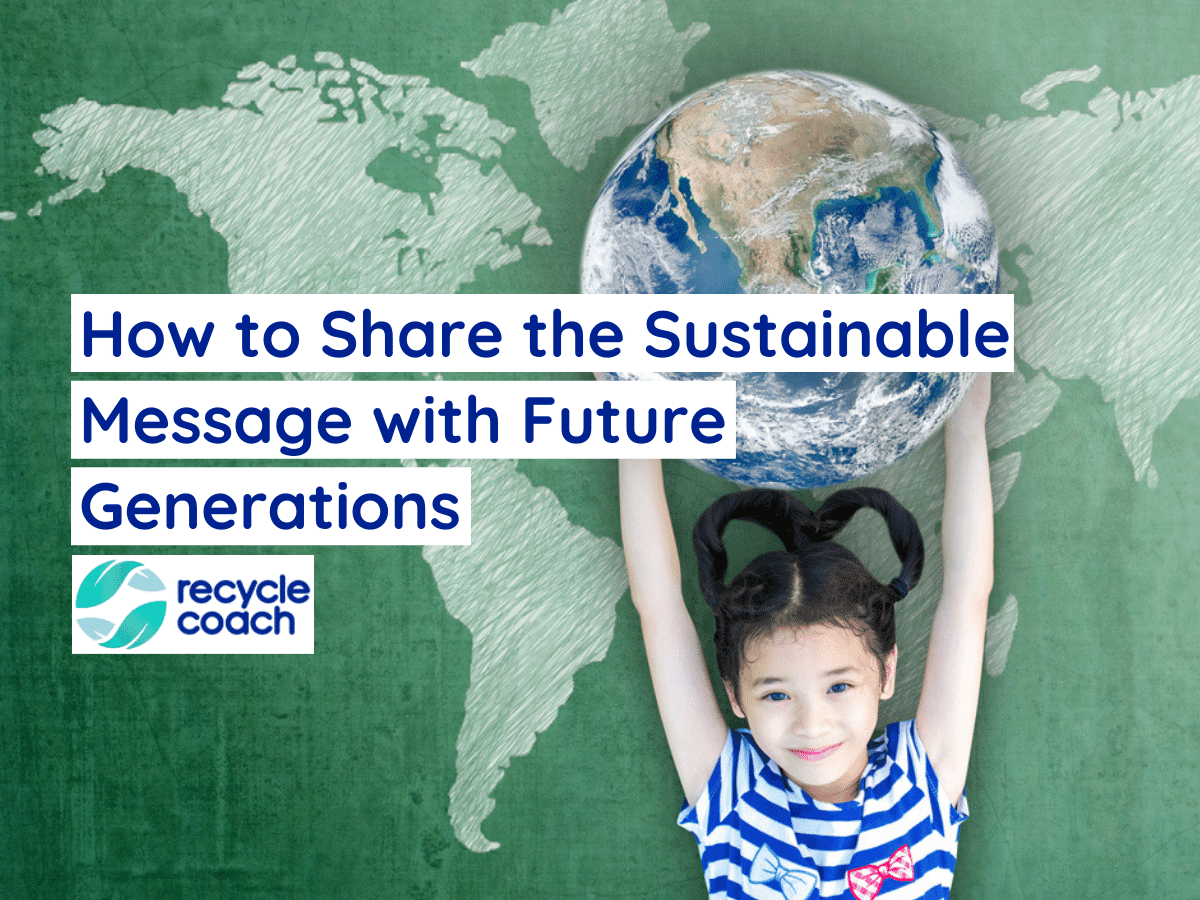How to Share the Sustainable Message with Future Generations

The children, as they say, are the future. With the fate of the future of our planet so dependent on change to protect our environment, it is imperative that we share the sustainable message with the next and future generations. Reduce, reuse, and recycle will continue to be the core message of sustainability in 2022, and beyond.
Shaping the environmental leaders of tomorrow means finding fun yet informative ways to teach young people about environmental issues, how to tackle them, and about important figures that are making changes – including young activists across the world.
In this article, we will share the best ways to get young people interested and inspired to share the sustainable message, start sustainable businesses, or generally live more eco-friendly lifestyles.
From films and books to education and activists, here are our tips to introduce and engage future generations with climate and environmental issues.
Read for Revolution
When looking towards the future, it can seem very doom and gloom. But, there are many great children’s books about the planet that have a perfect balance of information and inspiration.
From books for babies, like Baby Loves Earth: An ABC of Our Planet by Jennifer Eckford and illustrated by Teresa Bellon, to How To Change Everything By Naomi Klein and Rebecca Stefoff for young humans (think teens), there are books for all ages.
Starting to teach children at a young age about climate change, and adapting as they grow with age-appropriate literature will mean that the sustainable message sticks with them and is at the forefront of their minds.
Watch Fun, but Factual Films
Though reading can be a great learning tool, it isn’t always the most accessible or enjoyable for everyone’s learning style or attention needs. In that case, there are lots of great fictional films that touch on important, factual issues regarding the environment.
Films like WALL-E (2008), which features a robot that cleans up a waste-covered Earth, has heartfelt messaging and, if followed up with conversations or other education, can really help to ignite interest in waste issues. Similarly, the film Ice Age: The Meltdown (2006) touches on climate change and global warming.
Children’s films often tackle hard-hitting topics in approachable ways, and it’s good to look out for any topics that could lead to larger discussions. Combined with school teaching, museum trips, or stimulating documentaries, fictional stories can help children to more clearly visualize the environmental issues happening now, and the dangers of the future.
Provide Environmental Education
Though 75% of public school science teachers in the U.S. teach climate change, there have been suggestions that school children are receiving mixed messages. Though it is on the teaching agenda within science subjects, introducing workshops or guest speakers who are experts in their fields, could give more clarity about climate change.
Schools Initiative Programmes from the likes of Countrystyle Recycling aim to educate primary school pupils on the 3 R’s – Reduce, Re-use, and Recycle. Through their schools initiative, they say their “objective is to teach primary school pupils the benefits of recycling and most importantly how they can recycle at home. […] The schools initiative is our way of connecting with pupils, making the teaching process informative but fun.”
Taking learning outside the classroom is another great way to engage young people with a sustainable message. This could mean bringing up topical or trending stories about the climate at home to start conversations, or thinking of clever ways to encourage your kids to recycle, such as on nature walks or treasure hunts.
Celebrate Young Environmental Leaders
In a study by LEGO, it was found that more kids want to be YouTubers, or influencers when they grow up rather than astronauts nowadays. While this was shocking to older generations, it is not to dismiss the impact that YouTubers and Influencers can have. Though it may not seem like it, being vocal on a public platform can align itself with activism. Being an influence for good and for change can be very inspirational.
Similarly, there are many young environmental leaders, or influencers if you will, who could be good role models for younger generations. It’s likely you and your children will have heard of Greta Thunberg, who started publicly speaking about climate change at just 15 years old.
But there are many other young environmental activists across the world that are making a difference and drawing attention to the climate emergency. From 9-year-old Ridhima Pandey from Haridwar, India to Jaden Anthony, 11, from New York, sharing inspirational young people using their voice to change the world may just inspire more future generations to get involved at a young age.
Reduce, Reuse, and Recycle
We know that the future of our earth depends on change and our ability to reduce, reuse, and recycle. While the current generations can pave the way and make fundamental changes right now that can help improve the current climate crisis, it is the future generations that will have to deal with the ongoing consequences.
That means it is prime time to get young people excited about change and become enthusiastic advocates of the environment and the 3 R’s. From babies to teens, through factual books and fictional films, school environment initiatives to become environmental influencers and activists, sharing the sustainability message with future generations begins now.
Author Bio
Daniel Groves has a background in Business Economics and is passionate about the growth of sustainable businesses. Daniel has collaborated with many online publications to further develop his knowledge and share his experience with like-minded eco-conscious entrepreneurs, business owners, and growth strategists. Connect with Daniel on LinkedIn.